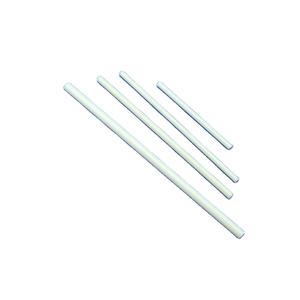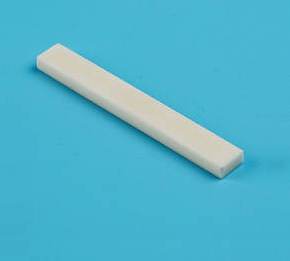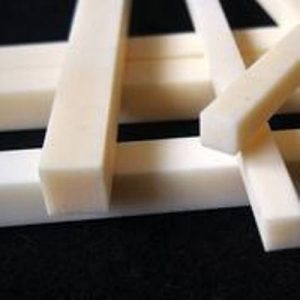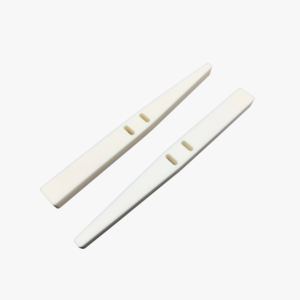Professional industry ceramic supplier, silicon nitride, silicon carbide, aluminum nitride and any other kinds of ceramics.
PRODUCT PARAMETERS
Description
Overview of Laser Processing Aluminum Oxide Plate 96% Al2O3 Alumina Ceramic Substrate
Laser Processing Aluminum Oxide Plate 96% Al2O3 Alumina Ceramic Substrate are one of the most widely used and versatile technical ceramics, prized for their excellent combination of properties. Composed primarily of aluminum oxide (Al₂O₃), they offer outstanding hardness, wear resistance, and electrical insulation, even at high temperatures. From low-purity grades for general industrial use to high-purity compositions for demanding applications, alumina ceramics provide a cost-effective and reliable solution across a vast range of industries.
Features of Laser Processing Aluminum Oxide Plate 96% Al2O3 Alumina Ceramic Substrate
-
High Hardness & Wear Resistance: Excellent resistance to abrasive wear, making it ideal for liners, nozzles, and guides.
-
Superior Electrical Insulation: Maintains high electrical resistivity and dielectric strength, even at elevated temperatures.
-
Excellent Thermal Stability: Withstands high operating temperatures and exhibits good thermal conductivity.
-
High Mechanical Strength: Possesses good compressive strength and stiffness.
-
Chemical Inertness: Resists corrosion from a wide range of acids, alkalis, and other harsh chemicals.
-
Cost-Effectiveness: A highly versatile and economically efficient ceramic material for numerous applications.
Specification of Laser Processing Aluminum Oxide Plate 96% Al2O3 Alumina Ceramic Substrate
This alumina ceramic plate is made from 96% pure aluminum oxide (Al2O3). It’s designed for laser processing. The material offers strong performance in demanding applications. High purity ensures reliable results. This plate has exceptional hardness. It resists wear very well. The surface stays smooth under tough conditions. Thermal stability is a key feature. It handles sudden temperature changes without cracking. Heat spreads evenly across the surface. Electrical insulation properties are excellent. Current leakage isn’t a problem. This makes the plate safe for electronic uses. Chemical resistance is another benefit. Acids and alkalis don’t damage it easily. The plate stays intact in corrosive settings. Laser cutting works well on this ceramic. Precision etching is achievable. Clean edges result from the process. Minimal material waste occurs during fabrication. This substrate fits many industries. Electronics manufacturers use it for circuit carriers. Industrial machinery needs it for insulating parts. Medical devices benefit from its biocompatibility. High-frequency equipment relies on its electrical properties. The alumina plate supports thin-film technology. Metallization bonds strongly to its surface. Engineers choose it for dimensional stability. Parts keep their shape under stress. This avoids performance issues. Long-term reliability is proven. The material doesn’t degrade quickly. Maintenance needs stay low. Consistency in production matters. Batch-to-batch uniformity is maintained. Quality checks confirm specifications. This ceramic substrate meets strict standards. It solves problems in heat management. It provides safety in electrical isolation. It ensures accuracy in laser-created components.
Applications of Laser Processing Aluminum Oxide Plate 96% Al2O3 Alumina Ceramic Substrate
Laser processing works very well for aluminum oxide plates. This material is 96% Al2O3 alumina ceramic. It is hard and brittle. Traditional machining often causes cracks or chips. Laser cutting avoids this problem. It uses a focused beam of light. This beam melts or vaporizes the ceramic cleanly. The result is precise shapes and clean edges. The cuts are very thin. This minimizes wasted material. It is ideal for creating complex outlines. Small parts can be cut accurately.
Drilling holes is another key use. Lasers make small, clean holes quickly. They can create holes of different diameters. They can also make holes at angles difficult for drills. The hole walls are smooth. There is no tool wear. This is important for high-volume production. It ensures consistent hole quality every time.
Surface marking is also common. Lasers etch information onto the ceramic. This includes serial numbers, barcodes, logos, or circuit patterns. The mark is permanent and resistant. It withstands high heat and chemicals. The marking process is fast. It does not use inks or solvents. This makes it clean and environmentally friendly.
Laser processing is a non-contact method. The tool never touches the part. This eliminates mechanical stress. Fragile ceramic substrates stay intact. The heat input is highly controlled. The laser beam is very focused. This localizes the heat. The surrounding material stays cool. This prevents thermal damage. Cracking near the cut edge is rare.
Speed is a major benefit. Laser systems work quickly. Complex patterns cut faster than with mechanical tools. Setup times are often shorter. Changing the laser path is digital. No physical tool changes are needed. This improves overall production efficiency. It allows for flexible manufacturing runs.
The precision is excellent. Laser systems follow digital designs exactly. Tolerances are tight. Repeatability is high. Every part matches the design perfectly. This reliability is crucial for electronics and technical uses. Thin alumina plates handle well under the laser.
Company Profile
Tanki New Materials Co.Ltd. focus on the research and development, production and sales of ceramic products, serving the electronics, ceramics, chemical and other industries. Since its establishment in 2015, the company has been committed to providing customers with the best products and services, and has become a leader in the industry through continuous technological innovation and strict quality management.
Our products includes but not limited to Aerogel, Aluminum Nitride, Aluminum Oxide, Boron Carbide, Boron Nitride, Ceramic Crucible, Ceramic Fiber, Quartz Product, Refractory Material, Silicon Carbide, Silicon Nitride, ect. please feel free to contact us.

Payment Methods
T/T, Western Union, Paypal, Credit Card etc.
Shipment Methods
By air, by sea, by express, as customers request.
5 FAQs of Laser Processing Aluminum Oxide Plate 96% Al2O3 Alumina Ceramic Substrate
Here are five common questions about our 96% Al2O3 Aluminum Oxide Ceramic Plates:
What is this plate exactly?
This is a flat plate made from aluminum oxide ceramic. It contains 96% Al2O3 (alumina). This material is very hard and durable. It handles extreme heat well. It’s also a great electrical insulator. We use it for many industrial jobs.
What makes this ceramic special?
Its main features are excellent heat resistance and electrical insulation. It withstands high temperatures without warping. It keeps electricity from flowing through it reliably. This makes it safe for electrical parts. It’s also very hard and resists chemical corrosion. These traits are vital for demanding uses.
Can you cut or shape this ceramic plate?
Yes, laser cutting works best. Special lasers precisely cut intricate shapes and drill holes. Other methods like grinding or CNC machining are possible too. Laser processing is often preferred. It gives clean edges and avoids cracking the brittle material. This precision is key for complex designs.
Do I need to prepare the surface for coatings?
Surface preparation is important. Laser processing often leaves a slightly rough edge. Sometimes you need to clean or smooth this area. This ensures coatings or metal layers stick properly. Good adhesion is critical for circuits or protective finishes. We can advise on the best prep steps for your project.
Why use this instead of metal?
Metals conduct electricity and heat easily. This ceramic plate does not conduct electricity. It also handles much higher heat than most metals. Its stability under thermal stress is superior. This makes it perfect for electronics needing insulation. It also resists wear and corrosion better than many metals.
REQUEST A QUOTE
RELATED PRODUCTS

Industrial Custom C799 Al2O3 Aluminum Oxide 99.7 Round Ceramic Alumina Disc

Laser Cutting Alumina Substrate Aluminum Oxide Al2O3 Ceramic PCB Sheet

95% 99% Aluminum Oxide Al2O3 Textile Ceramic Guide Tube for Twist Machine

Insulation Round 95% Al2O3 Alumina Aluminum Oxide Ceramic Gasket Disc for LED Equipment

95% Aluminum Oxide Ceramic Block with Holes Alumina Insulating Parts



